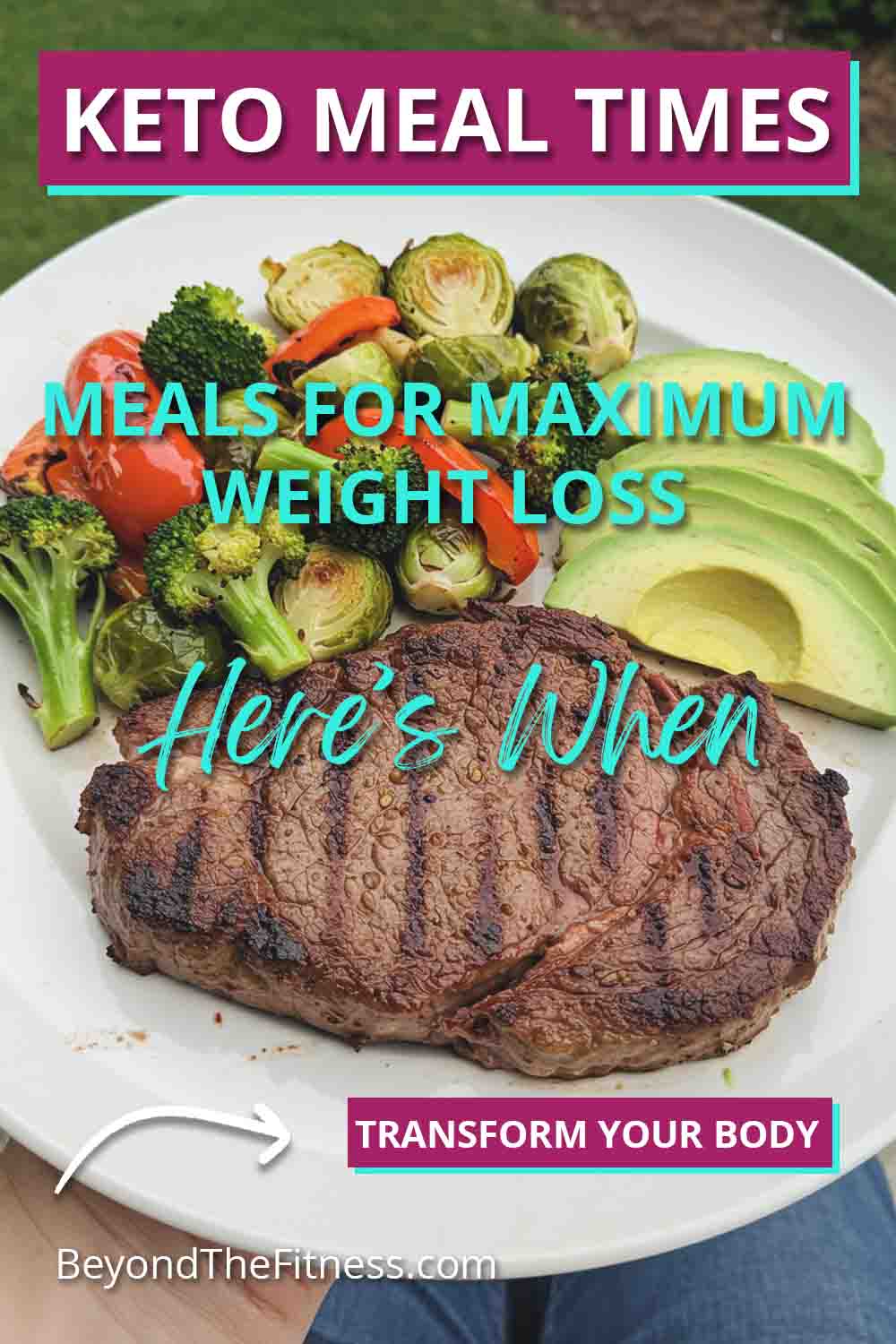You’ve probably heard a lot about the keto diet. It’s a way of eating that’s very low in carbohydrates, moderate in protein, and high in healthy fats. When you eat this way, your body can switch from using sugar (from carbs) for energy to using fat for energy. This state is called ketosis, and it’s often linked to weight loss.
But maybe you’re wondering if just eating keto foods is enough. Does it matter when you eat those foods? I get asked this question a lot. People want to know if timing their keto meals can help them lose weight faster or more easily. It’s a great question. Our bodies are pretty amazing, and they do have internal rhythms. Let’s explore whether aligning your keto meals with these rhythms, or using specific timing strategies, can give your weight loss journey an extra boost.
Your Body Has a Clock
Think about your daily routine. You probably wake up around the same time, feel hungry for lunch around noon, and get sleepy in the evening. Your body has its own internal clock, often called a circadian rhythm. This clock helps control lots of things, like when you feel awake or tired, when you get hungry, and even how well your body processes food.
You Might Be Interested In: Delicious Keto Meals Tailored to Your Needs With Custom Keto Diet
This internal clock is influenced by things like sunlight. When it’s light outside, your body thinks, “Okay, time to be active and burn energy.” When it gets dark, it thinks, “Time to rest and repair.” This natural cycle affects hormones related to hunger and metabolism, like insulin. Insulin helps your body use or store sugar. Some research suggests our bodies might be better at handling food, especially carbohydrates, earlier in the day when we’re naturally more active and sensitive to insulin. Later at night, our bodies are winding down, and digestion might slow a bit.
So, the idea is that eating in sync with this natural rhythm might help our bodies work more efficiently. Does this apply specifically to keto, where carbs are already very low? That’s the interesting part.
Keto and Meal Timing: What’s the Connection?
On a standard diet high in carbohydrates, timing meals, especially carbs, might have a more noticeable effect because of how carbs impact blood sugar and insulin. On keto, you’re already keeping carbs super low, which helps keep blood sugar and insulin levels more stable throughout the day. This is one of the main reasons keto works well for weight loss and blood sugar control for many people.
Because keto naturally helps stabilize blood sugar, the exact timing of your meals might be less critical for weight loss than it would be on a higher-carb diet. The most important things for losing weight on keto are:
- Staying in Ketosis: This means consistently keeping your carb intake very low (usually under 20-50 grams per day).
- Managing Calories: Even on keto, you need to use more energy than you consume to lose weight. Eating high-fat foods doesn’t mean you can eat unlimited amounts. Fat is calorie-dense, so portion awareness is still key.
- Choosing Quality Foods: Focusing on whole, unprocessed keto-friendly foods provides nutrients and helps you feel full.
So, does timing matter at all? While it might not be the number one factor for keto weight loss, it can still play a supporting role, especially when combined with certain eating patterns. Think of it as fine-tuning your approach.
Potential Perks of Timing Your Keto Meals
Even if consistency and calories are king, paying some attention to when you eat your keto meals could offer some advantages:
- Better Digestion: Eating very large meals, especially late at night, can sometimes lead to indigestion or discomfort for some people. Spacing meals out or eating earlier might feel better.
- Improved Sleep: A heavy meal right before bed can interfere with sleep quality. Finishing your last meal a few hours before you hit the pillow allows your digestion to settle. Good sleep is also really important for weight management and hormone balance.
- Syncing with Your Body Clock: As we talked about, eating more of your food during daylight hours aligns with your body’s natural rhythm. This might help optimize metabolic processes, although more research is needed specifically on keto.
- Structuring Your Day: Having set meal times can help prevent mindless snacking and make it easier to stick to your keto plan.
- Working with Intermittent Fasting: This is where meal timing really shines on keto. Many people find combining keto with intermittent fasting (IF) very effective. IF naturally involves specific eating and fasting windows, making meal timing a core part of the strategy.
Keto and Intermittent Fasting: A Powerful Pair
Intermittent fasting isn’t a diet itself; it’s an eating pattern that cycles between periods of eating and voluntary fasting. It doesn’t necessarily dictate what foods you eat, but when you eat them. Since both keto and IF can help your body burn fat, combining them is a popular strategy.
Here’s how IF structures your meal timing:
- 16/8 Method: This is very common. You fast for 16 hours each day and eat all your meals within an 8-hour window. For example, you might eat between 12 PM (noon) and 8 PM, fasting overnight and through the morning. This means your keto meals (lunch and dinner, maybe a snack) fall within that specific timeframe.
- 18/6 Method: Similar to 16/8, but with a slightly longer fasting period (18 hours) and a shorter eating window (6 hours). For instance, eating only between 1 PM and 7 PM.
- OMAD (One Meal a Day): This is more advanced. You fast for about 23 hours and eat all your daily calories in one large keto meal within a 1-hour window. This requires careful planning to ensure you get enough nutrients.
- 5:2 Diet: You eat normally five days a week and significantly restrict calories (or fast completely) on two non-consecutive days. On keto, the “normal” days would be keto eating, and the restricted days would be very low-calorie keto or fasting.
Combining keto with IF means your eating times are naturally defined by your chosen fasting schedule. Many find this helps accelerate fat burning, improve insulin sensitivity, and simplify their eating routine. The fasting periods give your body a longer break from digestion, potentially enhancing the fat-burning state of ketosis.
Introducing: Benefits of Custom Meal Plans With Keto Diet
What About Eating Earlier? Early Time-Restricted Feeding (eTRF)
Another timing strategy gaining attention is Early Time-Restricted Feeding (eTRF). This is basically a form of intermittent fasting where the eating window is shifted earlier in the day. For example, instead of eating from 12 PM to 8 PM, you might eat from 8 AM to 4 PM, or 9 AM to 5 PM.
The idea behind eTRF relates back to our circadian rhythms. Proponents suggest that eating earlier aligns better with when our bodies are most prepared to handle food and manage blood sugar. By finishing your last meal in the mid-afternoon, you give your body a long overnight fast during its natural rest and repair cycle. Some studies (mostly not specific to keto) suggest eTRF might offer benefits for insulin sensitivity and blood pressure, potentially aiding weight management efforts.
Could eTRF be beneficial on keto? It’s possible. If you find you have more energy and feel better eating earlier, it could be a good fit. It ensures you aren’t eating close to bedtime, which can support better sleep. However, like other timing strategies, its direct impact on keto weight loss specifically needs more research. The main drivers remain ketosis and calorie balance.
The Traditional Three Meals a Day Approach
You don’t have to do intermittent fasting to be successful on keto. Eating three structured meals – breakfast, lunch, and dinner – can work perfectly well. The key here is consistency and making sure those meals fit your keto macros (low carb, moderate protein, high fat).
- Keto Breakfast: Starting your day with a satisfying keto meal like eggs and avocado, or a keto smoothie, can set you up for stable energy levels.
- Keto Lunch: A large salad with protein and healthy fats, or leftovers from dinner, can keep you fueled through the afternoon.
- Keto Dinner: Aim to have dinner at a reasonable hour, perhaps a few hours before bed. Focus on protein and non-starchy vegetables with healthy fats.
Spacing these meals out can help manage hunger and prevent overeating at any single meal. This approach might feel more familiar and sustainable for some people.
Listening to Your Body’s Signals
While structured timing like IF or eTRF can be helpful tools, one of the most important skills you can develop is listening to your own body. Keto often helps regulate appetite hormones, meaning you might naturally feel less hungry or experience fewer cravings.
Pay attention to your genuine hunger and fullness cues.
- Eat when you feel physically hungry (stomach rumbling, slight dip in energy), not just because the clock says it’s time.
- Stop eating when you feel comfortably full or satisfied, not stuffed.
- Notice if you feel better eating two or three larger meals, or if smaller, more frequent keto snacks work for your energy levels (though snacking is often less necessary on keto due to the high satiety of fat).
Your ideal meal timing might also depend on your lifestyle, work schedule, exercise routine, and personal preferences. There isn’t a single “magic” time that works for everyone.
When Are the “Best” Times? Some General Thoughts
If we were to outline some general guidelines based on combining keto principles with body rhythms, it might look something like this:
- Morning/Breaking the Fast: If you eat breakfast, make it a solid keto meal focused on protein and fat. This helps start your day with stable energy. If you practice IF, your first meal will be later, but the principle is the same – make it count.
- Midday: Lunch is often important for maintaining energy and focus. A well-formulated keto lunch prevents that afternoon slump often caused by carb-heavy meals.
- Evening: Try to eat dinner at least 2-3 hours before you plan to go to sleep. This allows time for digestion and can contribute to better sleep quality. Avoid very heavy meals late at night if possible.
- Workout Nutrition: If you exercise, you might consider timing some food around your workouts. Some people like a small keto snack before training for energy, while others prefer to train fasted. A protein-rich keto meal after your workout can help with muscle recovery. This is very individual.
Special Considerations for Women
As a woman, your body has unique hormonal rhythms that can influence appetite, energy, and metabolism throughout the month. Factors like the menstrual cycle can play a role.
- Hormonal Shifts: Some women find they feel hungrier or crave certain foods at different points in their cycle. It’s important to honor these signals while still sticking to your keto principles. Sometimes slightly adjusting your fat or protein intake, or allowing for a few extra keto-friendly calories, can help manage these fluctuations without derailing progress.
- Avoiding Overt Restriction: While calorie management is important for weight loss, overly severe restriction, especially when combined with intense exercise, can sometimes negatively impact hormones. Ensure you’re eating enough nutrient-dense keto foods to support your body’s needs.
- Individuality: Women’s responses to keto and meal timing can vary greatly. What works wonders for one person might not feel right for another. Listening to your body, tracking your cycle (if applicable), and adjusting your approach as needed is crucial. Don’t feel pressured to follow a specific timing trend if it doesn’t suit your body or lifestyle.
Practical Tips for Success
Whether you choose IF, eTRF, three square meals, or simply listening to your body, here are some tips:
- Plan Ahead: Knowing what keto meals you’ll eat and roughly when can prevent impulsive choices. Meal prep can be a lifesaver.
- Consistency is Key: Whatever timing pattern you choose, try to stick with it most days. Your body thrives on routine.
- Hydrate Well: Drink plenty of water throughout the day, both during eating and fasting periods (if applicable). Sometimes thirst is mistaken for hunger.
- Focus on Food Quality: Timing matters less if your meals aren’t well-formulated. Prioritize whole, unprocessed keto foods like meat, fish, eggs, low-carb vegetables, nuts, seeds, and healthy fats like avocado and olive oil.
- Don’t Obsess: While timing can be a helpful tool, don’t let it become a source of stress. If you miss your “perfect” time occasionally, it’s okay. Focus on your overall keto adherence, calorie balance, and lifestyle habits. Stress itself can hinder weight loss.
- Experiment: Be willing to try different timing strategies (like shifting your IF window or trying an earlier dinner) to see what feels best for your body, energy levels, and weight loss results. Give each approach a fair trial (a few weeks) before deciding.
Ultimately, the “best” time to eat your keto meals is the time that allows you to consistently stick to the diet, manage your calories effectively, feel your best, and fits seamlessly into your life. For many, combining keto with a structured eating window like 16/8 IF provides a good balance of benefits and practicality. For others, simply eating well-planned keto meals when hungry works just fine. The key is finding what makes keto sustainable and successful for you.
Related YouTube Video
Final Thoughts
Finding your rhythm with keto meal timing is a personal journey. While the core principles of keto – low carb, moderate protein, high fat, and managing calories – are the main drivers of weight loss, optimizing when you eat can be a helpful secondary strategy. Whether it’s through intermittent fasting, eating earlier in the day, or simply establishing consistent meal times, paying attention to timing can potentially support better digestion, sleep, and alignment with your body’s natural cycles. Remember to listen to your body, especially considering factors unique to women, and choose an approach that feels sustainable and supports your overall well-being. Don’t be afraid to experiment and find the timing that helps you achieve your health and weight loss goals most effectively.







